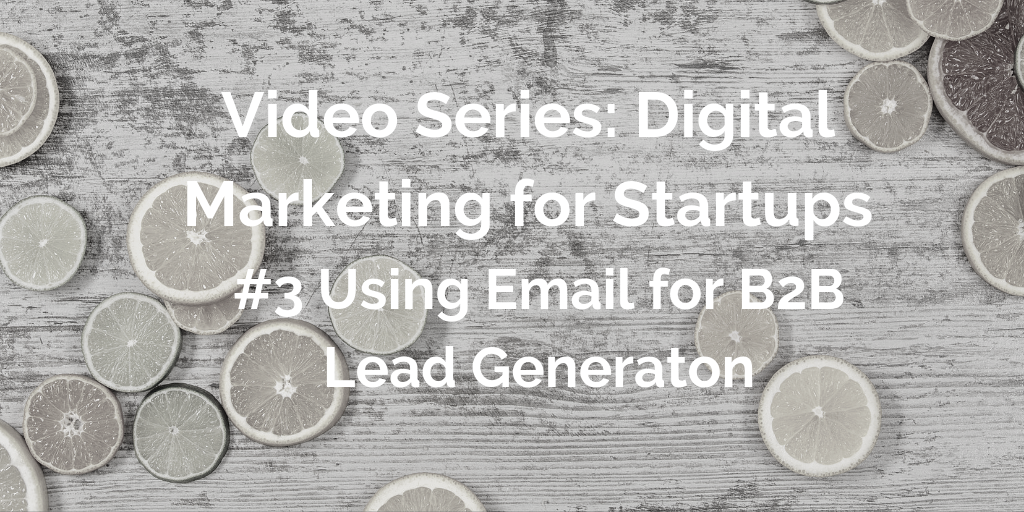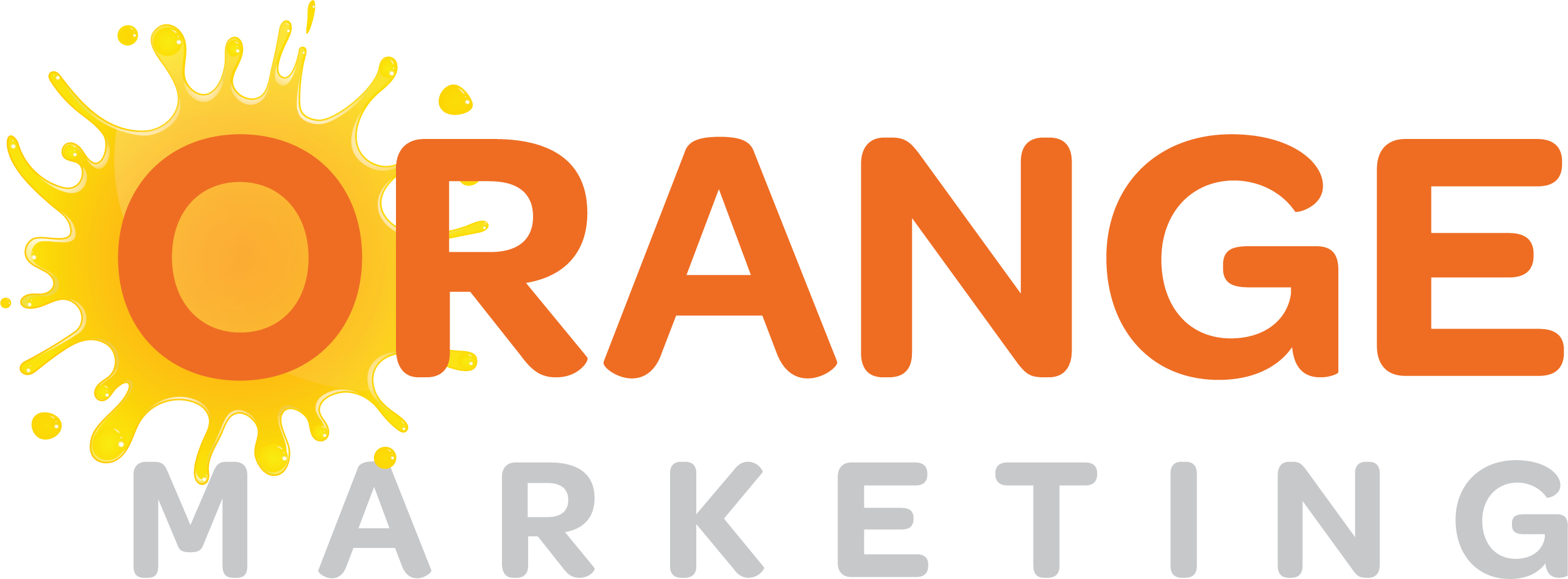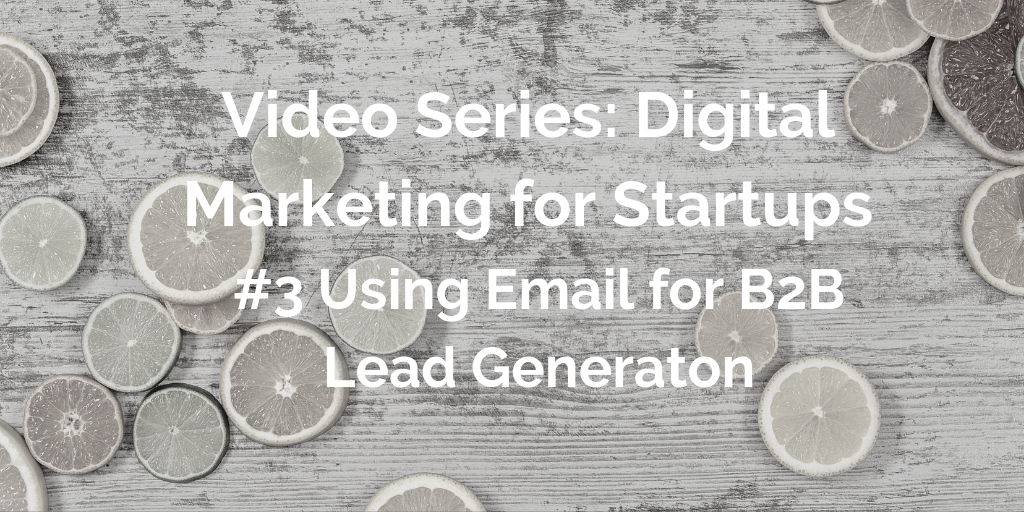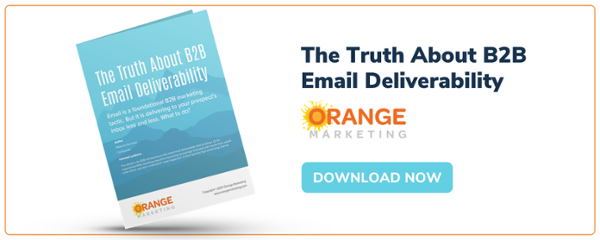4 min read
5 Minute Video: How to Use Email Correctly for B2B Lead Generation
![]() Orange Marketing
:
Aug 05, 2019
Orange Marketing
:
Aug 05, 2019

Email is absolutely the work horse of any B2B Digital Marketing strategy and startups are no exception. The exception becomes how startup Founders think email should be used, and how it really should be used to form the cornerstone of your digital marketing strategy.
In this quick 5-minute video, we explain why and how.
KelseyG:
We want to talk a little bit about email, which is still really the workhorse of any digital marketing strategy. So one of the things that happens to us relatively frequently with early stage startup founders is that they have been using an offshore team, a tool, or various other methods to send out lots and lots and lots of email.
RebeccaG:
Lots, thousands, hundreds of thousands.
KelseyG:
Hundreds of thousands. Of course this seems like a great idea and everybody wants to start there. There's just a couple of reasons why it's not always a great plan, not the least of which, Rebecca, is what?
RebeccaG:
Spam and getting your domain shut down so that you can no longer send email ever again, or for a very long time.
KelseyG:
It really actually is spam. If you guys are sending emails to people who didn't ask for your content, it really is spam. So, sorry. So how do you use email properly, if that's not the right way to do it? So there's really two kinds of email. Well, there's more than two kinds of email. But if you think about it as a one-to-one email or one too many emails.
So one-to-one emails are like sales emails. Most sales teams have a process where they're reaching out to a prospect and sending them an email talking about your product and the benefits of your product. What are some of the best practices for those sales emails?
RebeccaG:
For the sales emails, honestly, they need to be really short. And people want to talk, talk, talk, but they really need to be short. They need to be helpful, addressing something that the prospect is having a problem with, and quickly provide a piece of content that could help them research or understand more versus talking about yourself or saying how great your product is. It's got to be helpful, it's got to be short, you get in, then you get out.
KelseyG:
One of my other best pieces of advice is to make sure that it's personalized. And so that's the reason these systems now are set up to make it really easy for the sales rep to personalize it. I don't mean personalizing using the tokens or whatever your email system has to force fit in their name and what not. I'm talking about really personalizing it.
In our own research, the personalization out beat the non-personalized emails as much as 10 to one. So think about what you might know about that person, what you might be able to find out about that person, and add a little bit of it in the top, and a little bit of it in the middle, and a little bit in the bottom, and it'll go a long way.
New Guide: The Truth About B2B Email Deliverability
RebeccaG:
It seems like a lot of work, but it honestly it is effective. It works better than sending out hundreds of thousands of email to nobody. And so, your sales team will find that it really works if they take the time and they do that.
In the one to many, the marketing emails, they're very much like the sales emails, but of course they're not personalized. And what we try to focus on is the problem, and making sure that the prospect somehow can understand that this email is for them. And we usually, nine times out of 10, want to push a piece of content that they can use because we want a call to action where they will give us their information and show that they're interested so the salespeople know that somebody is really interested in this product.
KelseyG:
So this is where segmentation comes in. One of the rules of segmentation is as many as necessary, but as few as possible. So during the break Rebecca mentioned to me, one of our clients wanted seven segments out of 3,000 contacts.
RebeccaG:
No.
KelseyG:
That's not a good use of time. If you have, in that small of a bucket, if you had two, people who were finance people and people who were salespeople, they might have a very different message. But if something is quite similar, don't create a segment where there isn't one. It's too much splitting hairs. You don't have the resources to have one email for CFOs and one email for financial planners. That's just not going to work. It does work in big numbers when you have plenty of resources.
RebeccaG:
Plenty of resources, plenty of money, and plenty of time. But you guys don't have that.
KelseyG:
The last thing about HTML emails, how do you prefer to test the emails?
RebeccaG:
Well, I prefer to test the emails a lot of different ways. You have to look at them on your own phone, and you have to look at them in Outlook and Google because you'll get fooled. They can look different on a Windows Platform vs. a MAC. So we like to send them to our colleagues and ask them to open them and tell us what they're seeing and give us screenshots back.
KelseyG:
Yeah. So there's lots of services and tools out there too. Like Litmus is kind of the gold standard in email testing. But as Rebecca pointed out, just seeing that they look okay ... is not the same as doing live tests and making sure that all the links work ... and make sure that the subject line comes through. Make sure that the preview text, preview text is a really important thing, make sure that the first thing that people don't see is something like IMG_001, like if you don't have image tags (alt tags on your images). Like image text on your logo. Now that I've mentioned that, you're going to see it over and over again in your email, I promise.
RebeccaG:
Yeah. So that's a little bit about email. I mean, we could go on and on. We have a lot of passion on email. I'll leave it at that. And for our next video, we're going to talk about ...
KelseyG:
Social media. And why social media is important, even for B-to-B companies.
RebeccaG:
And why you have to use it.
OM Content Posts
- 5 Minute Video: Why Content is So Important for Your Startup
- 5 Minute Video: Creating Content Quickly
- Marketing 101: Video Case Studies
- Why Startups Need To Start Their Content Strategy Before Launch
- Easily Create Content for Your Startup's Product Launch
- Promote Your Product Launch Content in 5 Easy Steps
- 5 Reasons to Start Content Marketing Before Your Product Launch


